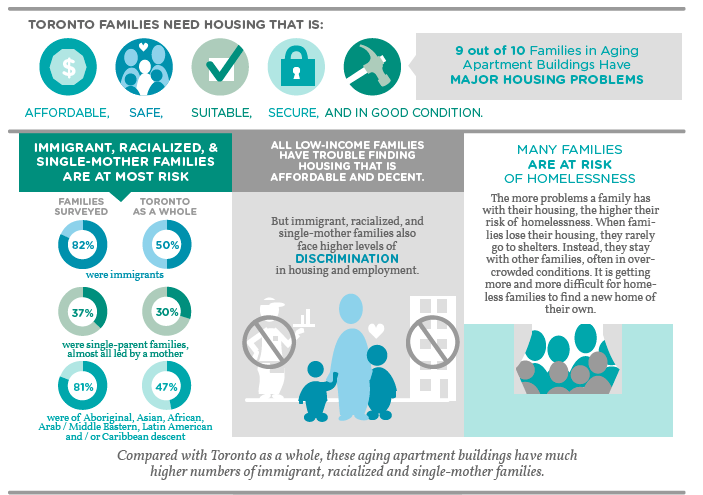This question came from Gayathri .N. via our latest website survey.
As usual, we don’t have a single set of statistics that paints the whole picture of racialized homelessness in Canada, but we do have a variety of research that points to the overrepresentation of racialized people in the homeless population.
Plenty of American research in the 1980s highlighted this issue, which is especially prevalent in large cities. In 1992, Belcher reviewed the research and American history, concluding that poverty and racial exclusion were the primary factors leading racialized people to homelessness.
This is a trend that, unfortunately, continues today and here in Canada. A 2011 study using comprehensive census data on employment found that “…during the heyday of Canada’s pre-recession economic boom, racialized Canadians were more willing to work, but experienced higher levels of unemployment and earned less income than non-racialized Canadians.” Census data in general has shown that across the country, racialized people are at greater risk of living in poverty and therefore, at a higher risk of experiencing homelessness. Here are a few findings from this report:
- The poverty rate for racialized people was 22% in 2006, compared to the overall rate of 11%.
- In Toronto, 62% of people living in poverty were racialized; and in Vancouver, 58%.
- This is a growing problem, with the number of racialized families living in poverty increasing over time. Gender is also a factor regarding income gaps, as women are more likely to earn less. An Ontario study found that the gap is wider for first-generation racialized women, who make “47 cents for every dollar male, non-racialized immigrants make.”
Newcomers
Newcomers are also particularly at risk of homelessness, due to issues around language/culture adjustment, lack of employment opportunity or recognition of foreign experience/credentials, lack of affordable housing, health care access and more. Surveys in Toronto, Montreal and Vancouver found that “most newcomers reported spending more than 50% of income on housing, with 15% spending 75% or more.” Overspending on housing often leads newcomers to gather in poor quality, overcrowded housing. When people have such vulnerable housing situations, we call this “hidden homelessness.”
As recently reported on Global News, this has become a major issue across Canada with 10% of renters living in overcrowded homes. Paradis, Wilson and Logan’s (2014) research found that immigrant (82%), racialized (81%) and single mother families (37%) were most likely to be living in overcrowded situations and in poor quality housing in Toronto’s aging high-rise buildings (part of infographic featured below).
Aboriginal Peoples
The above data, however, does not include Aboriginal Peoples, who are also more likely to live in poverty and experience homelessness in Canada. This isn’t isolated to reserve or rural areas – according to one report from Hamilton, Ontario, almost 80% of Aboriginal people living in the area earned less than $20,000 a year.
One study estimates that in some major urban areas, 20-50% of people experiencing homelessness are Aboriginal; other researchers report that range as being wider at 11-96%. Belanger et al. found that 1 in 5 Aboriginal people experience homelessness, compared to 1 in 128 non-Aboriginal people. Despite the variance in numbers, it is clear that the state of housing for Aboriginal Peoples is dismal in this country.
This post is part of our Friday "Ask the Hub" blog series. Have a homeless-related question you want answered? E-mail us at thehub@edu.yorku.ca and we will provide a research-based answer.
Infographic: Nowhere Else to Go


